The Refugee Crisis Isn’t Isolated to One Country
Displaced people are found worldwide in unprecedented numbers.
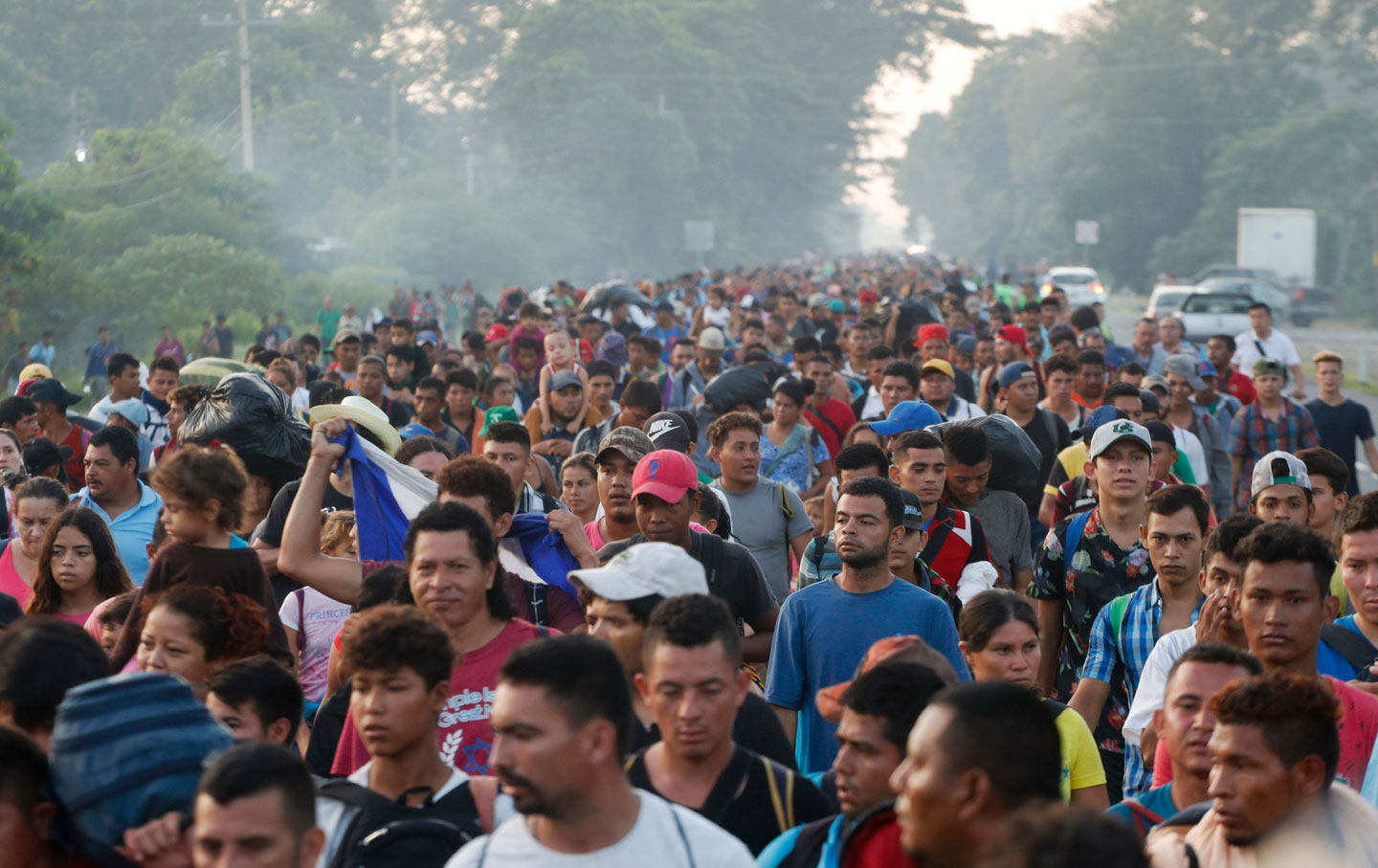
This article originally appeared at TomDispatch.com. To stay on top of important articles like these, sign up to receive the latest updates from TomDispatch.com.
Back in 1968, my father announced that, if Richard Nixon were elected president that November, he was going to move us all to Canada. I’m not sure who “us all” actually was, since my younger brother and I were then living with my mother and my parents had been divorced for years. Still, he was determined to protect us, should someone he considered a dangerous antisemite make it into the Oval Office—and leaving the country seemed to him like the best way to do it.
As it happened, Nixon did win in 1968 and none of us moved to Canada. Still, I suspect my father’s confidence that, if things got too bad here, we could always head somewhere else (Canada? Israel?) was a mental refuge for him that fit his own background very well. It was, after all, what his father had done in 1910, when his family was attacked by Cossacks in what’s Ukraine today. His parents had him smuggled out of town in a horse-drawn rig under bales of hay. He then walked across a significant part of Europe and took a boat from Antwerp, Belgium, to New York City. There, he was met by a cousin who brought him to Norfolk, Va. Eventually, my grandfather managed to bring his whole family to Norfolk, where he became, among other things, the president of his local Zionist club, fostering his dream of refuge. My father grew up in the haze of that dream.
In fact, my father’s reliance on the guarantee that he could go “somewhere else” accorded well with the post–World War II international consensus that people in danger of persecution where they lived had a right to seek refuge in another country. Shortly after the formation of the United Nations, that view was codified in the 1951 Convention Relating to the Status of Refugees.
The Convention consolidated various treaties created by European nations to address the desperate situation of millions of people displaced by the two World Wars. It defined a refugee as a person who:
As a result of events occurring before 1 January 1951 and owing to well-founded fear of being persecuted for reasons of race, religion, nationality, membership of a particular social group or political opinion, is outside the country of his nationality and is unable or, owing to such fear, is unwilling to avail himself of the protection of that country; or who, not having a nationality and being outside the country of his former habitual residence as a result of such events, is unable or, owing to such fear, is unwilling to return to it.
More recent regional agreements have expanded that definition to include people subject to external aggression, internal violence, or the serious disturbance of public order, whose lives, in short, have become unsustainable thanks to various forms of systemic violence. The Convention also laid out the obligations of nations receiving refugees—including providing housing, work permits, and education—while recognizing that receiving countries might need assistance from the international community to meet those obligations. It also affirmed the importance of maintaining family unity (something blatantly violated by the Trump administration under its policy of family separation at the US-Mexican border).
With the phrase “events occurring before 1 January 1951” the Convention’s framers alluded to the two world wars of the preceding decades. What they didn’t foresee was that millions more refugees would be churned up in the second half of the 20th century, much less what humanity would prove capable of producing in this one.
The trajectory was clear enough, however, when, the year before Nixon was elected, the 1967 Protocol to the Convention removed limits on migration-producing events occurring after 1951 and geographical restrictions of any sort. No matter when or where people became refugees, they were now subject to protection in all 148 nations that signed on, including the United States, which signed and ratified both the original Convention and the 1967 Protocol.
Refugees Everywhere
Twenty-first-century conflicts have already created millions of refugees. In fact, by mid-year 2023, the UN High Commission for Refugees (UNHCR) put the number at 36.4 million worldwide, a number that has doubled in just the last seven years. Three countries alone—Syria (6.5 million), Afghanistan (6.1 million), and Ukraine (5.9 million) —accounted for 52 percent of all external refugees in 2023.
And keep in mind that those 36.4 million refugees only include people officially registered with the UNHCR (30.5 million) or with UNWRA, the UN Works Relief Agency for Palestinians in the Near East (5.9 million). UNWRA was created in 1952, specifically to serve people displaced in the formation of Israel in 1948. Unlike the UNHCR, it provides direct service to registered Palestinian refugees and their descendants in Lebanon, Jordan, Syria, the West Bank (including East Jerusalem), and Gaza.
And that figure doesn’t even include the majority of people fleeing war and other systemic and climate violence, who are “internally displaced persons.” They are not counted as refugees in the legal sense because, while they’ve lost their homes, they still remain inside their own national borders. There were—take a breath—62.2 million internally displaced persons when the UNHCR issued that mid-2023 report.
Where do we find the majority of internally displaced persons? More than 90 percent of them have been uprooted by events in seven key countries or regions: Afghanistan, the Democratic Republic of the Congo, various Latin America and Caribbean countries, Myanmar, Somalia, Sudan, and Ukraine.
Which countries are taking in refugees? According to the UNHCR, “Low- and middle-income countries host 75 percent of the world’s refugees and other people in need of international protection.” Furthermore, “the Least Developed Countries provide asylum to 20 percent of the total.” Despite Donald Trump’s histrionic claims about asylum-seekers pouring into the United States and “poisoning the blood” of this country, the United States is not, in fact, a major recipient of international refugees.
Popular
“swipe left below to view more authors”Swipe →Nor is the United Kingdom, whose Tory government has come up with a perverse scheme to potentially ship any asylum seekers approaching Great Britain by boat to Rwanda for “processing” in return for financial support of various kinds. (In November 2023, that country’s supreme court nixed the plan, but in December the government signed a new agreement with Rwanda, which it claims will satisfy the court’s objections to the agreement.)
In fact, Americans may be surprised to learn that the two countries taking in the most refugees at the moment are Iran and Turkey, at 3.4 million each, followed by Germany and Colombia at 2.5 million each and Pakistan at 2.1 million.
Let me highlight just two areas where, at this very moment, refugees are being created in enormous numbers with no apparent end in sight. One of them people around the world just can’t take their eyes off right now (and for good reason!), while the other seems almost entirely forgotten.
Gaza: Since Hamas’s vicious and criminal October 7 attack on targets in Israel, the world has focused intently on events in Israel-Palestine. The UNHCR’s 2023 report was compiled before the attack and Israel’s subsequent and ongoing genocidal destruction of Gaza, which has seen the deaths of more than 21,000 Gazans (a majority of them women and children) and the loss of more than half of its housing stock and three-quarters of its 36 hospitals. In one sense, Gaza’s residents are not new refugees. More than 85 percent of its pre-war population of 2.3 million are now “merely” considered internally displaced. Yes, they have been starved, deprived of medical care and potable water, harried by bombs and missiles falling on homes and temporary shelters from one part of that 25-mile-long strip of land to the other, and forced into an ever-shrinking area near Gaza’s southern border with Egypt. Still, for now they remain in Gaza with nowhere else to go.
It’s no secret, however, that the Israeli government intends to change that. On Christmas Day 2023, Prime Minister Netanyahu told the Israeli newspaper Hayom Daily that he is seeking the “voluntary migration” of Palestinians from Gaza. A week earlier, Trump’s former UN ambassador and now rival for the Republican presidential nomination, Nikki Haley, had opined that “the Palestinians should have gone to the Rafah crossing and Egypt would have taken care of them.” Even if Egypt were willing to accept more than two million displaced Gazans—which it is not—it would be hard to see such a migration as anything but a forced population transfer, which international law considers a crime against humanity.
Sudan: While the world has watched Gaza’s decimation in horror, an even larger refugee crisis in the African nation of Sudan has gone almost unremarked upon. In 2019, a massive nonviolent movement of Sudanese civilians led to a military coup against longtime dictator Omar Bashir. While the military initially agreed to hand power over to civilian rule in two years, by October 2021, its leaders had declared their intention to remain in power, while the United States, despite rhetoric supporting civilian rule, stood idly by. Since then, war between the military government and a paramilitary group, the Rapid Support Forces, has displaced 4.5 million or more within Sudan, while another 1.2 million have fled to neighboring countries.
Good “Refugees” and Bad “Economic Migrants”
Human beings have always moved around the world, beginning with our first forays out of Africa 60,000 to 70,000 years ago. However, it is only within the last two centuries or so that countries have attempted to control human transit across their borders. International law concerning refugees is even newer, first forged, as noted, in the critical period immediately following World War II.
One perhaps unintentional consequence of those laws, created half a century ago to protect refugees, is the relatively new distinction between them and “economic migrants.” Refugees able to demonstrate a “well-founded fear of being persecuted” have the right to seek asylum in any country that’s signed the UN refugee convention. Anyone else, however economically desperate or deeply endangered from, say, increasingly fierce climate-change-induced weather extremes, has no actual right under international law to move to a safer country. That legal reality hardly makes the existential desperation of such migrants any less genuine, as evidenced by the fact that they risk—and lose—their lives daily in perilous sea crossings or thousand-mile treks like the one that passes through Central America’s deadly Darien Gap in a bid for survival. At present, however, international law offers them no special protection.
This will have to change, and quickly, as global warming makes ever more parts of the world increasingly uninhabitable, often in the very areas that are the least responsible for the actual burning of fossil fuels. We all live on one planet, and no country or individual, no matter how rich, can hope to remain insulated from the ever more devastating effects of the continued record burning of fossil fuels and the desperate overheating of our planet.
Bad News at the Border
My father was pretty sure that the Canadians would be glad to receive him and his kids in the event of Nixon’s election. I don’t know what the rules were back then, but today Canada allows “Express Entry for skilled immigrants,” presumably including people from the United States wishing to cross that country’s southern border.
It’s not so easy, however, for immigrants, skilled or otherwise, hoping to cross the southern US border these days. Despite our signature on the Convention on refugees, people seeking refugee status in this country now face almost insurmountable barriers. And those designated mere “economic” migrants have little hope of ever gaining legal residence in the United States.
Despite his promise to take “immediate actions to reform our immigration system,” three years after his election and the defeat of the man who had promised to build that “big, fat, beautiful wall” on our southern border, President Biden has done little to alleviate the situation. While he did end the Trump family separation plan and allow Covid-era restrictions on migration to expire, he’s kept in place a version of another Trump policy: denying asylum in the United States to migrants who fail to first request it in another country they’re passing through on the way to this one. So, as many as 10,000 immigrants a day now cross illegally into the United States. Since May, almost half a million of them have been caught and deported. As of this writing, 11,000 are living in camps on the Mexican side of the border, having applied for asylum using the Biden administration’s cell phone app. No one knows how long they will be there while this country’s overburdened asylum system limps along and election 2024 fast approaches (along with Trump’s proposed plans to create vast border deportation camps).
To be fair to Biden, with the exception of President Obama’s creation of a Deferred Action for Childhood Arrivals (DACA) status for immigrants who entered the US illegally as children, no administration or Congress has done much of significance over the past 40 years to address immigration issues in this country. What institutions do exist, including immigration courts, remain desperately underfunded, leading to staggeringly lengthy waiting times for asylum applicants.
The situation at the frontiers of wealthy countries like the United States will undoubtedly only get worse. Nations like ours can’t hope to keep the human urge for survival forever bottled up on our borders.
My father said he’d go to Canada if Nixon were elected. Recently, I’ve heard a few friends echo that intention should another dangerous authoritarian—Donald Trump—regain the White House in January 2025. If that were to happen, people around the world, citizens and migrants, the sheltered and unsheltered alike, can expect things to get so much worse. For us in the United States, emigration won’t be an option. Like it or not, we’ll have to stay and fight.
We cannot back down
We now confront a second Trump presidency.
There’s not a moment to lose. We must harness our fears, our grief, and yes, our anger, to resist the dangerous policies Donald Trump will unleash on our country. We rededicate ourselves to our role as journalists and writers of principle and conscience.
Today, we also steel ourselves for the fight ahead. It will demand a fearless spirit, an informed mind, wise analysis, and humane resistance. We face the enactment of Project 2025, a far-right supreme court, political authoritarianism, increasing inequality and record homelessness, a looming climate crisis, and conflicts abroad. The Nation will expose and propose, nurture investigative reporting, and stand together as a community to keep hope and possibility alive. The Nation’s work will continue—as it has in good and not-so-good times—to develop alternative ideas and visions, to deepen our mission of truth-telling and deep reporting, and to further solidarity in a nation divided.
Armed with a remarkable 160 years of bold, independent journalism, our mandate today remains the same as when abolitionists first founded The Nation—to uphold the principles of democracy and freedom, serve as a beacon through the darkest days of resistance, and to envision and struggle for a brighter future.
The day is dark, the forces arrayed are tenacious, but as the late Nation editorial board member Toni Morrison wrote “No! This is precisely the time when artists go to work. There is no time for despair, no place for self-pity, no need for silence, no room for fear. We speak, we write, we do language. That is how civilizations heal.”
I urge you to stand with The Nation and donate today.
Onwards,
Katrina vanden Heuvel
Editorial Director and Publisher, The Nation
More from The Nation
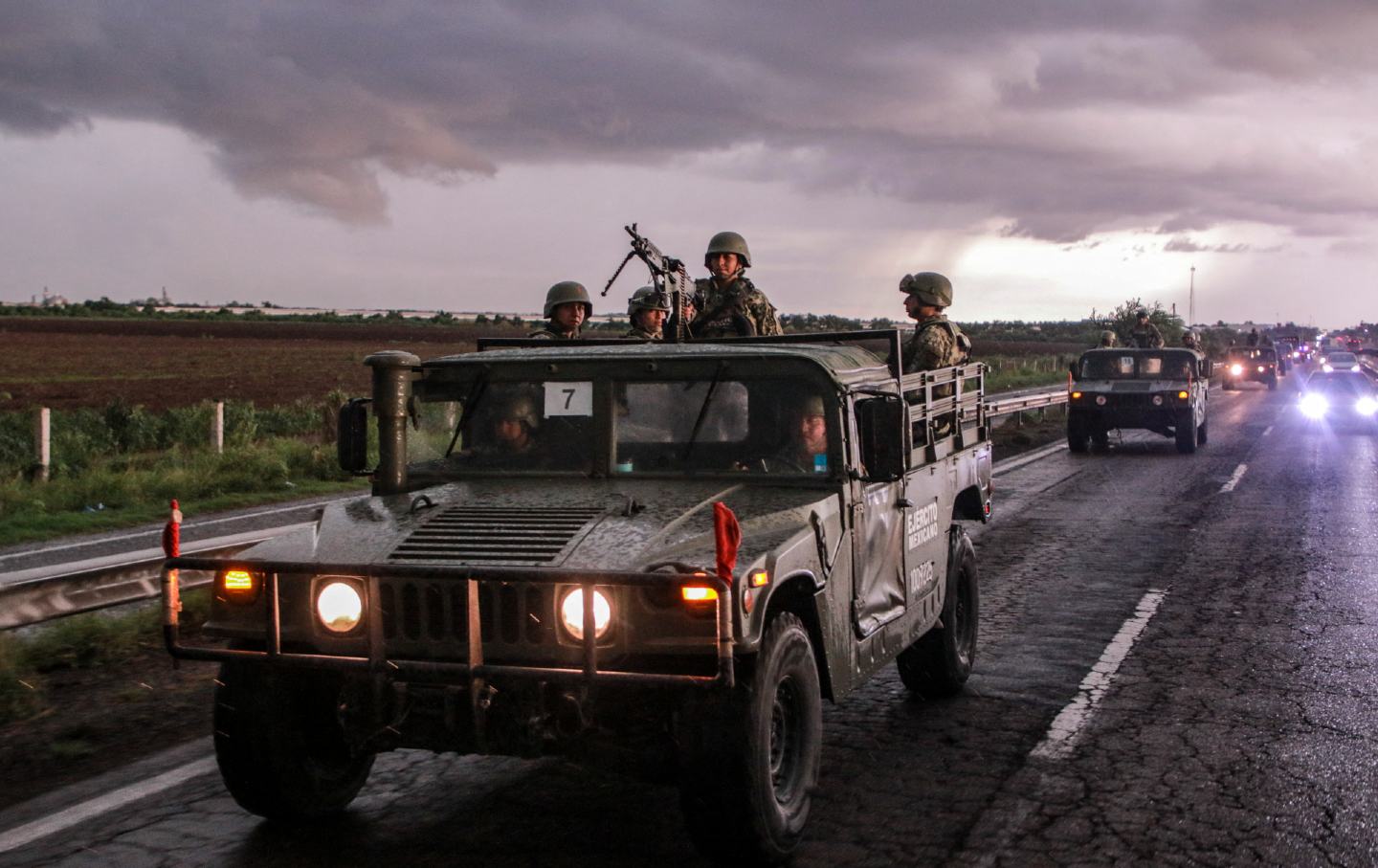
With Trump in the White House, Can Mexico Avoid Making the Drug War even Bloodier? With Trump in the White House, Can Mexico Avoid Making the Drug War even Bloodier?
Mexico’s new president, Claudia Sheinbaum, has a plan to combat drug trafficking, but she has a problem: Donald Trump.
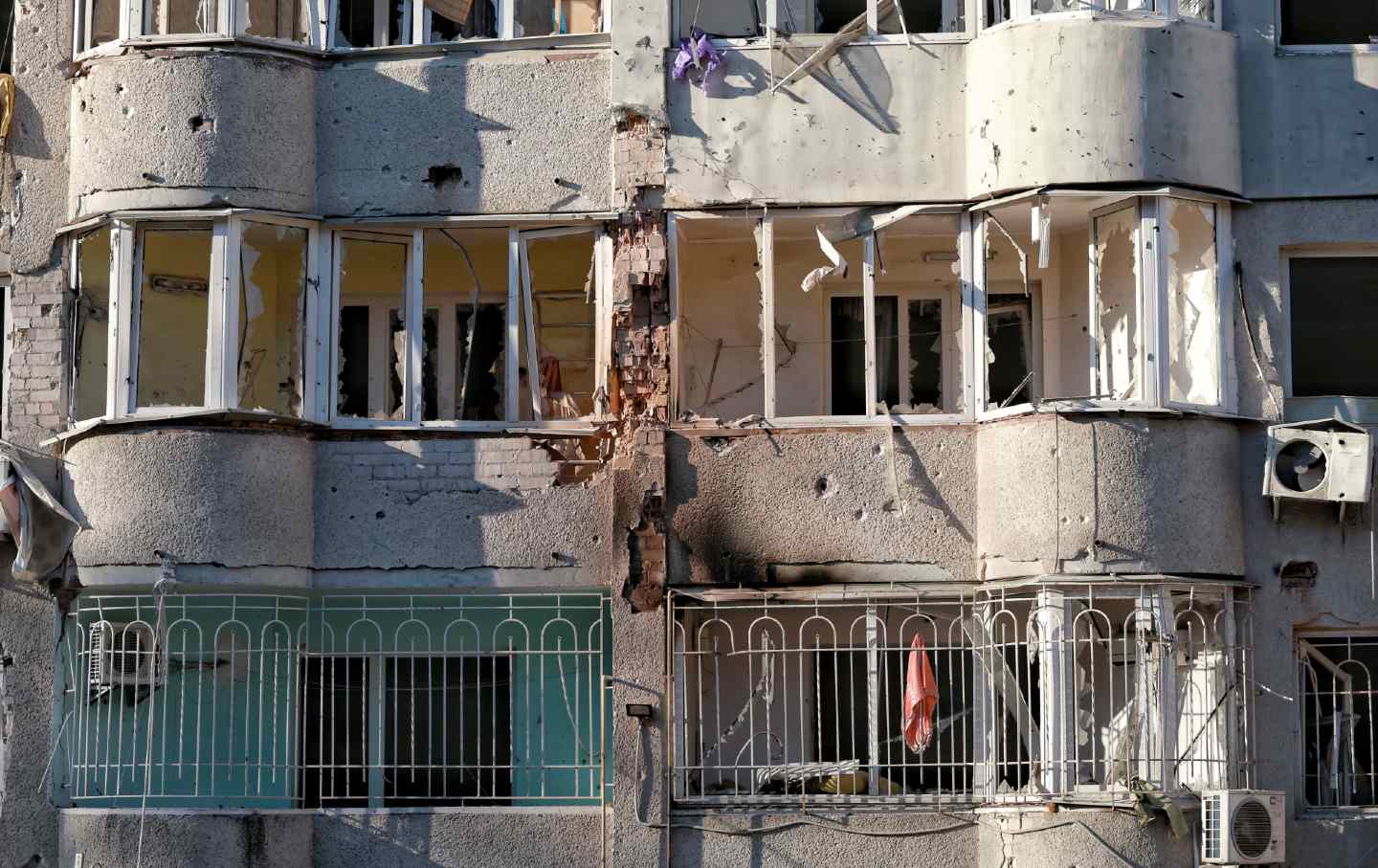
Biden’s Mindless Escalation Is a Final Betrayal of Ukraine Biden’s Mindless Escalation Is a Final Betrayal of Ukraine
Instead of preparing for inevitable negotiations, the outgoing president adds fuel to the fire.
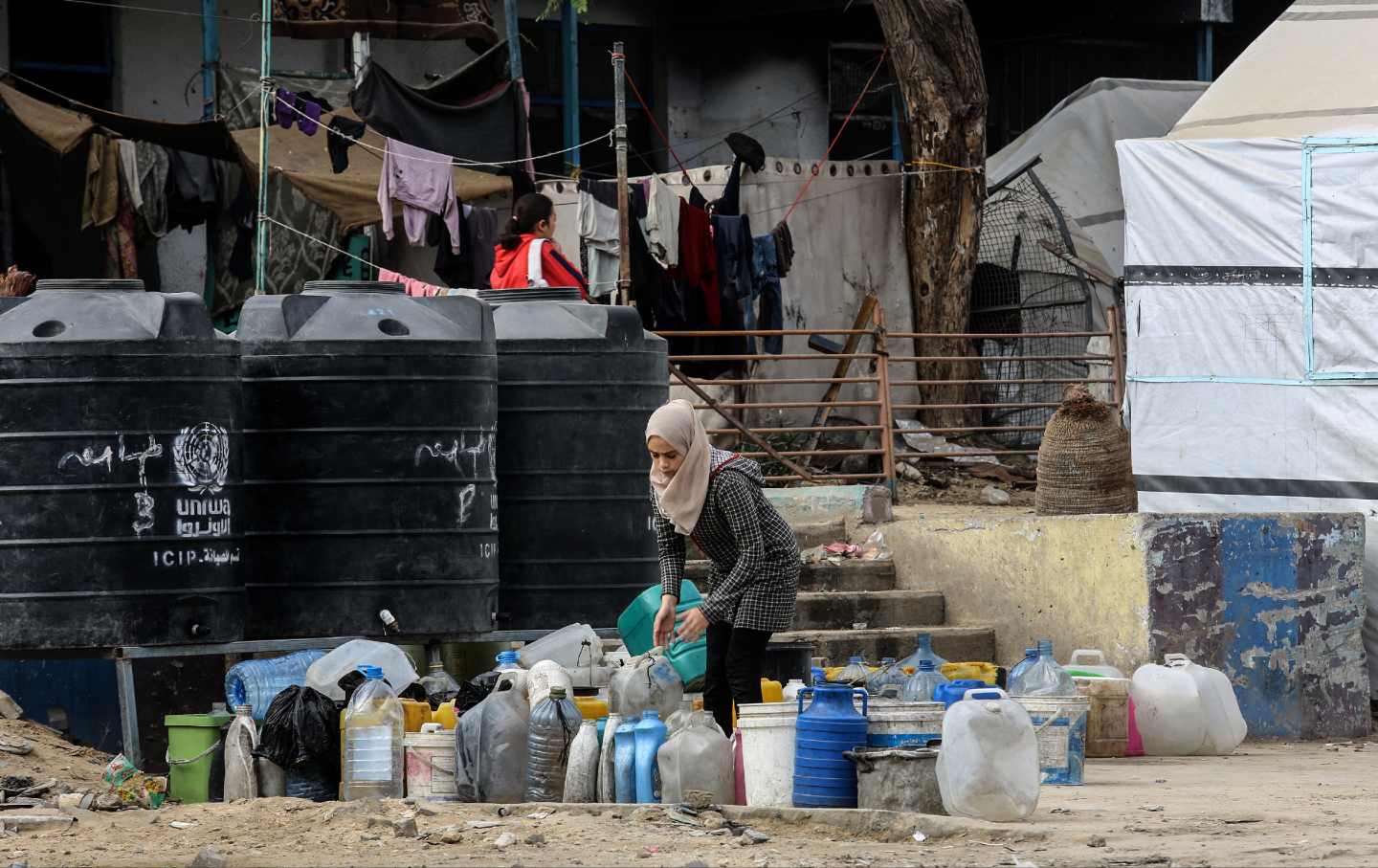
The Women Who Remain in Gaza Will Never Leave Me The Women Who Remain in Gaza Will Never Leave Me
I survived eight terrible months of genocide. Now, I’m in exile—but I can’t stop thinking about the women who have remained.

Trump’s Second Presidency Will Only Accelerate America's Imperial Decline Trump’s Second Presidency Will Only Accelerate America's Imperial Decline
Trump is on track to bring a hasty end, silent or otherwise, to an “American Century” of global dominion.
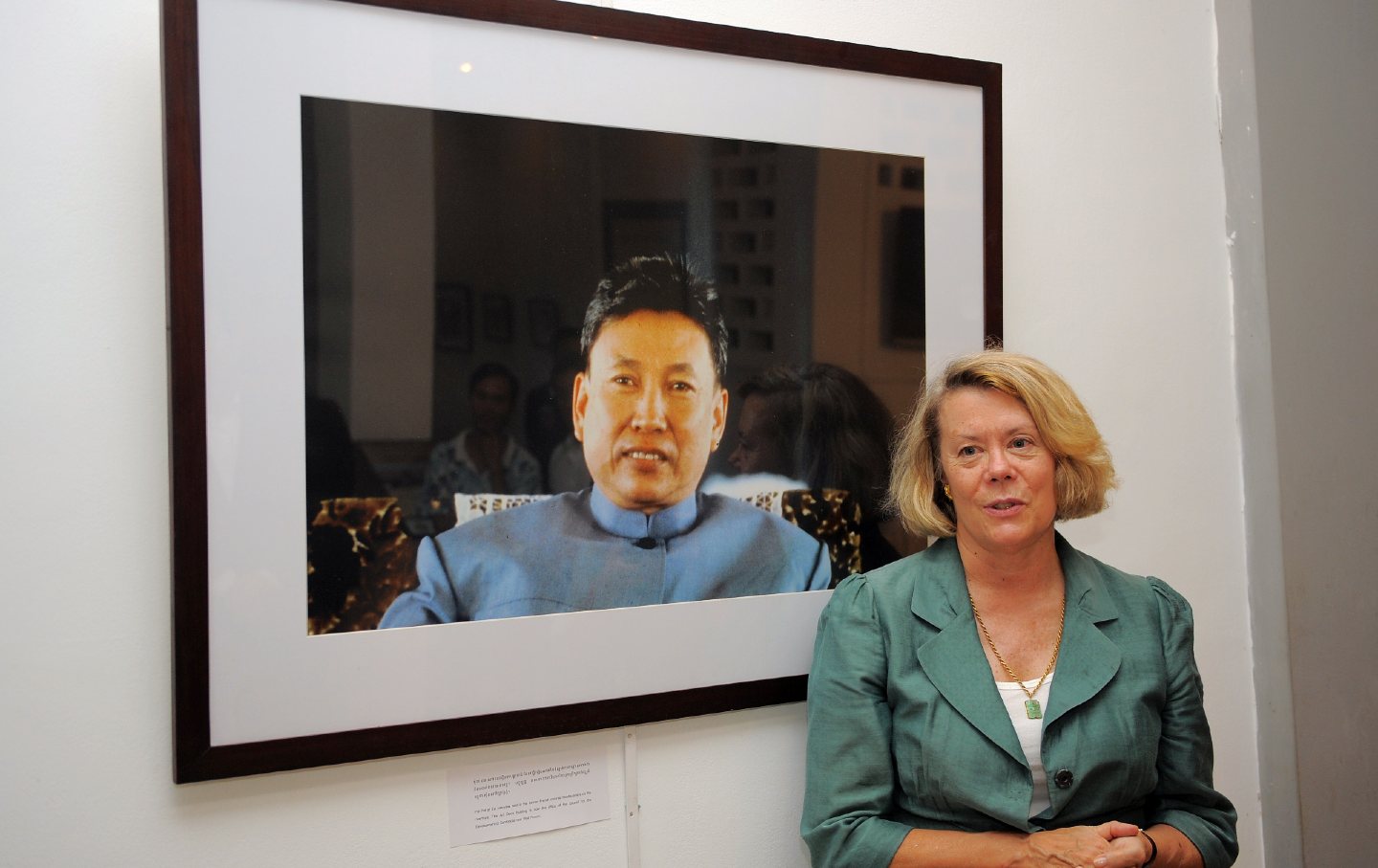
Warning From the Past Warning From the Past
In a new film, journalists confront a dictator.

The Case Against Joe Biden for Complicity in Genocide The Case Against Joe Biden for Complicity in Genocide
The ICC has applied for an arrest warrant for Benjamin Netanyahu. But Israel’s assault on Gaza has been made possible by US support.


